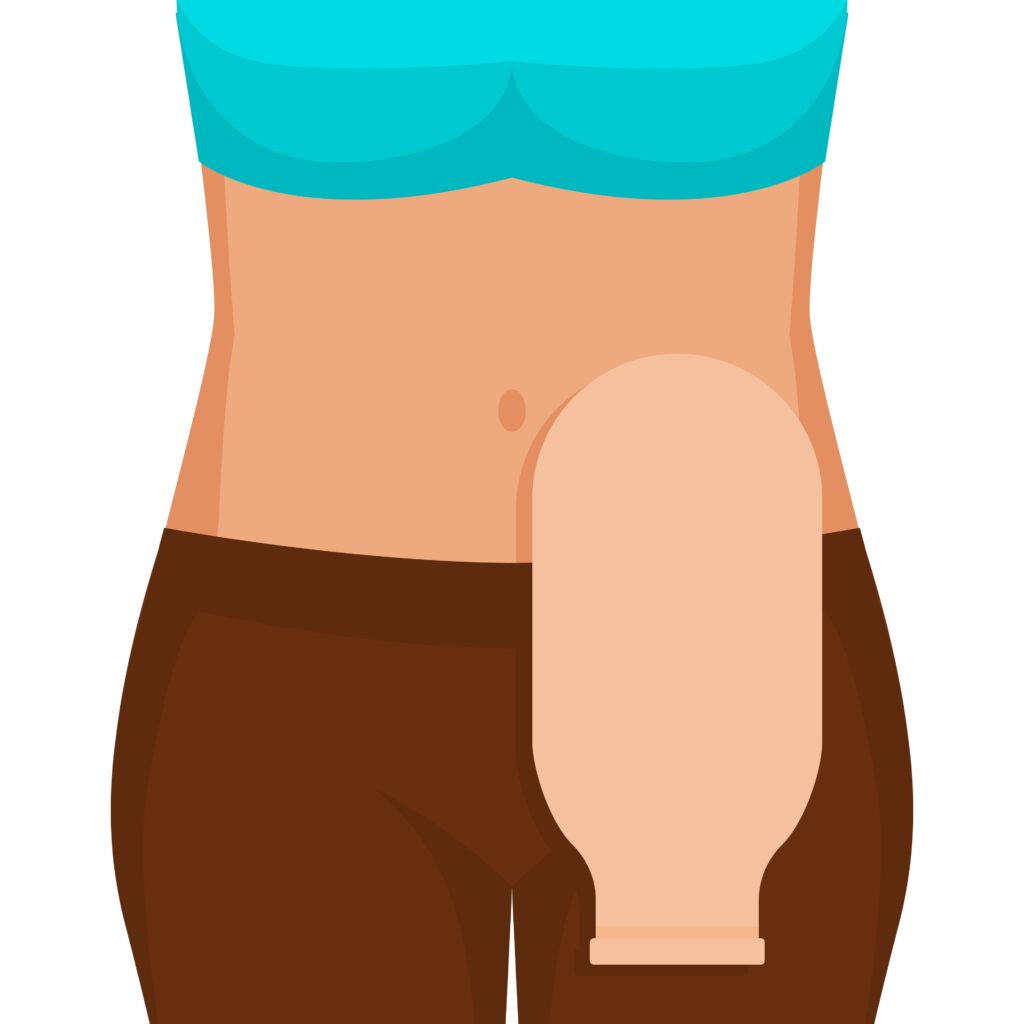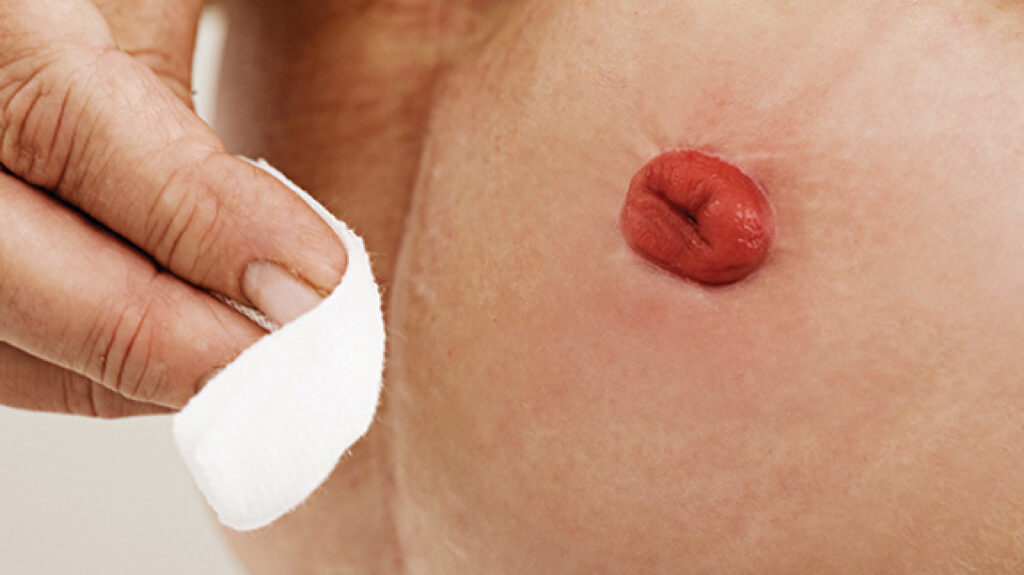Ostomy Skin Care
Stoma Care
It is vital to know how to care for the skin around your stoma. Importantly, the skin surrounding the stoma, called the peristomal skin, must be protected from direct contact with discharge. This discharge is potentially irritating. Furthermore, it is very high in digestive enzymes. Most importantly, the condition of this skin can affect not only your general well being, but also the skin barrier and pouching application. As a result, learning how to take good care of the skin around your stoma can bring great rewards in the form of both physical comfort and peace of mind.
Therefore, it’s better to prevent, rather than treat, skin problems around the stoma. A simple three-part program of Cleanse, Condition and Protect can ensure your skin is always in top condition. Also, it is good to note, if you do find you have a skin problem, rest assured that most problems are usually easily treatable.
Remember, though, if at any time you feel that you cannot get your skin healthy, or you feel you have tried all options without success, it may be time to visit your stoma care nurse or doctor for some help and advice.

Three Steps to Healthy Stoma Skin Care
Step 1: Cleanse
Many people feel that they need to keep the peristomal skin very clean at all times. Clearly, this can reach a point where they practice excessive cleaning, scrubbing and disinfection. In addition, this can be very harsh on skin since it removes the protective layers around the stoma.
Besides there is no need to use harsh cleansers or disinfectants. Your stoma will not get infected. If you think about it, what did you do before you had a stoma? For instance, cleaning around your stoma can be just that simple. Plain warm water is as simple as it gets. After carefully removing your skin barrier as described, cleanse your skin with warm water. Many people like to remove everything in the shower and completely rinse. Ultimately, it’s your choice. It will not harm your stoma. Of course, remover wipes are useful if you have a buildup of residue from either tapes or skin barriers. Be sure to cleanse your skin after using remover wipes.
If you want to use soap, select a brand that is not oil-based and doesn’t leave a residue. Specially designed skin cleansers are available which are soap and fragrance free if you wish for extra gentle cleansing. Once you have given your skin a good rinse, simply pat the skin dry. Then reapply your skin barrier. Water will not enter a stoma because of its gentle outward contractions, so it’s not necessary to cover the stoma while bathing or showering.
Step 2: Condition
If your skin shows signs of trouble such as redness or mild irritation, you should condition your skin. Indeed, taking quick action at this stage can help keep your skin in good shape.
An assortment of skin care products are oil-based, which can interfere with pouch adhesion. Therefore, if you have problem skin, such as dry/flaky skin or even just some mild redness and irritation, a non oil-based creme should be used that will not interfere with pouch adhesion.
Again, ensure you have a correctly fitting barrier to prevent skin irritation from leakage.
Step 3: Protect
Most products protect the skin that are specifically designed for people with stomas. For example, these include pastes, stoma powders, and protective wipes, as well as rings (washers) and strips.
There are various types of stoma pastes which are used as fillers or caulks. Thus, pastes can be applied directly around the stoma. Or you can apply paste on the skin barrier. Either way, you should have a firm seal between the pouch and your skin.
Be sure to use stoma paste only as a filler and not adhesive. Of course, pastes contain varying amounts of alcohol, and they can sting on broken skin. When they are applied to unbroken skin, there should be no sensation. Also, stoma powder (not talcum) is a good skin protector for broken skin. Consequently, it absorbs moisture and protects the skin, for instance.
Evidently, you can apply stoma paste over powder to seal the powder in. This may reduce the stinging sensation that can be experienced with pastes.

Tracheostomy Stoma Care
The buildup of mucus and the rubbing of the tracheostomy tube can irritate the skin around the stoma. Consequently, skin around the stoma should be cleaned at least twice a day to prevent odor, irritation and infection. For instance, if the area appears red, tender or smells badly, stoma cleaning should be performed more frequently. Immediately, call your surgeon’s office if a rash, unusual odor, and/or yellowish-green drainage appears around the stoma.
How to Clean Tracheostomy Stoma
• Wash your hands.
• Remove any dressing around the tracheostomy (if applicable). The tube should not have to be removed to clean the stoma.
• Dip the cotton tip applicators in the hydrogen peroxide (1/2 strength – equal parts peroxide and water) (saline can be used if the peroxide is too irritating) and use it to clean around the stoma site. Start as close as possible to the tracheostomy tube then work away from it.
• Repeat the process until debris and/or mucus is removed.
• Use a dry cotton tip applicator or face cloth to dry the skin.
• No gauze should be placed under the trach tube unless recommended by the treating physician. A dry dressing is helpful if the patient has areas of skin irritation or secretions. Your doctor should demonstrate how the dressing should be applied.








